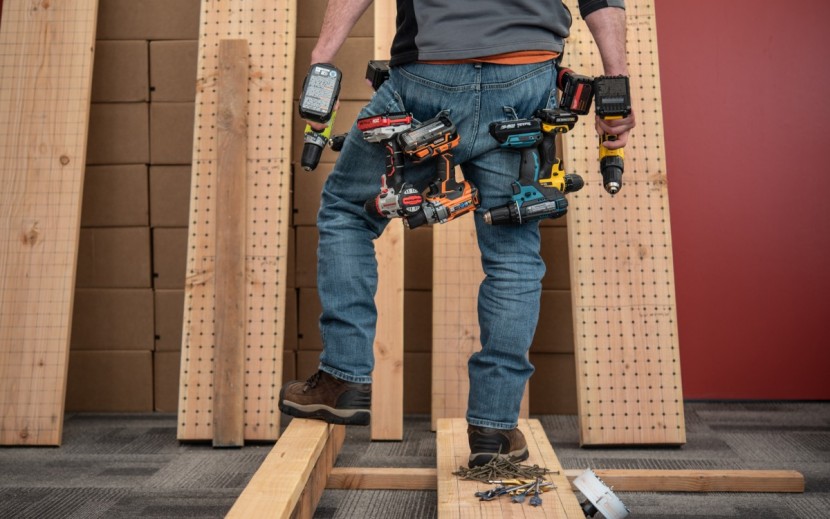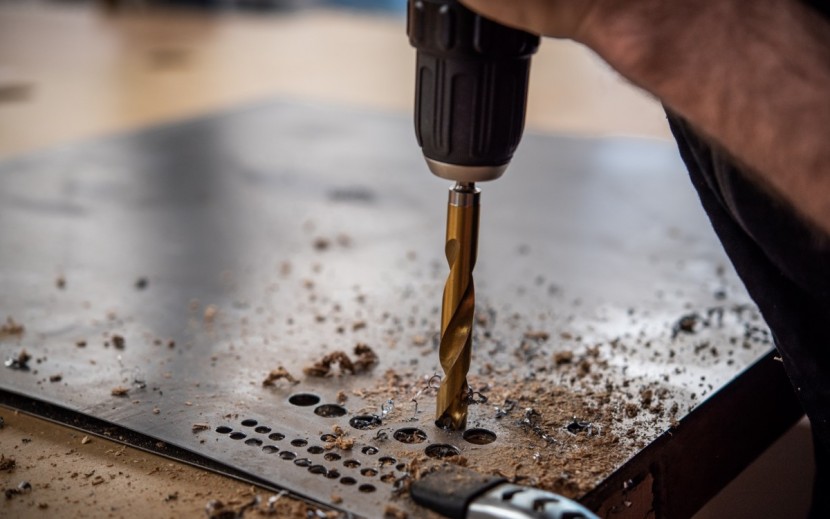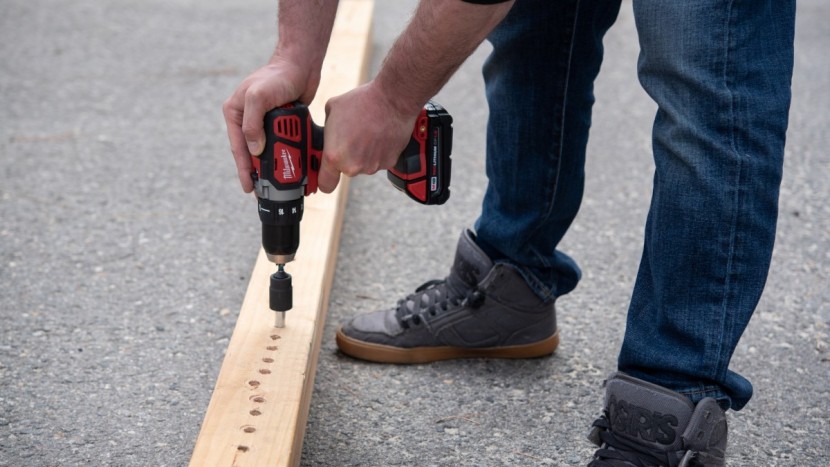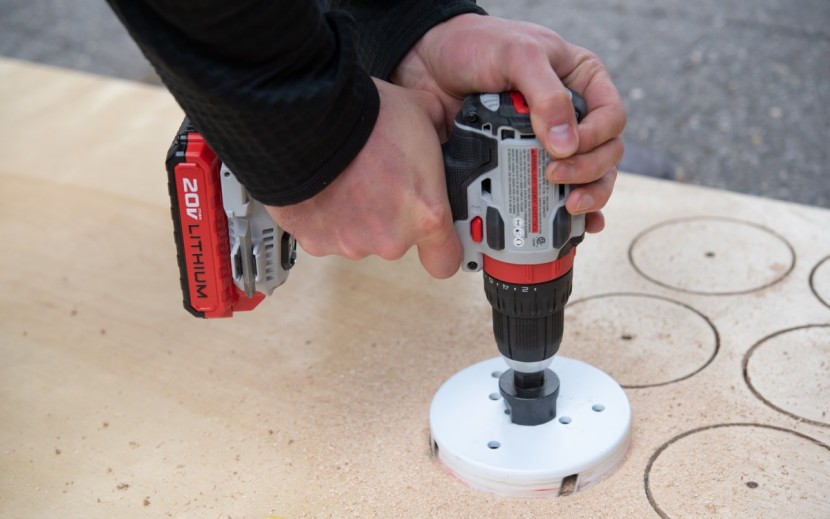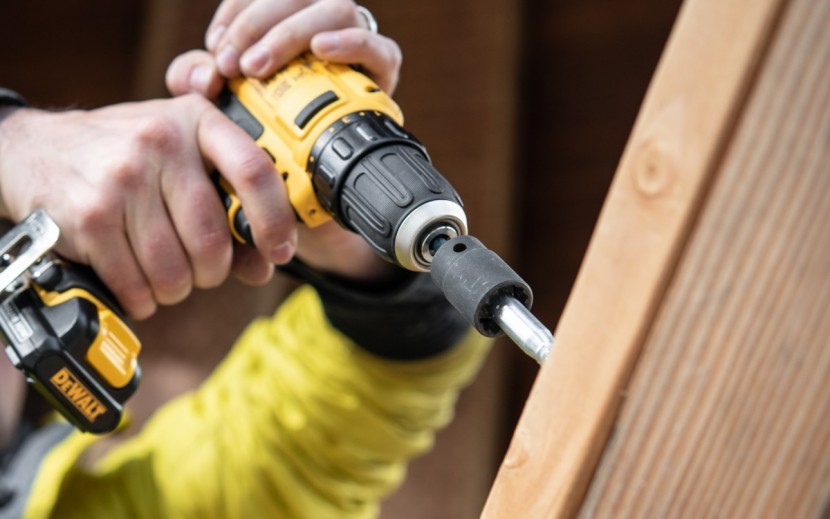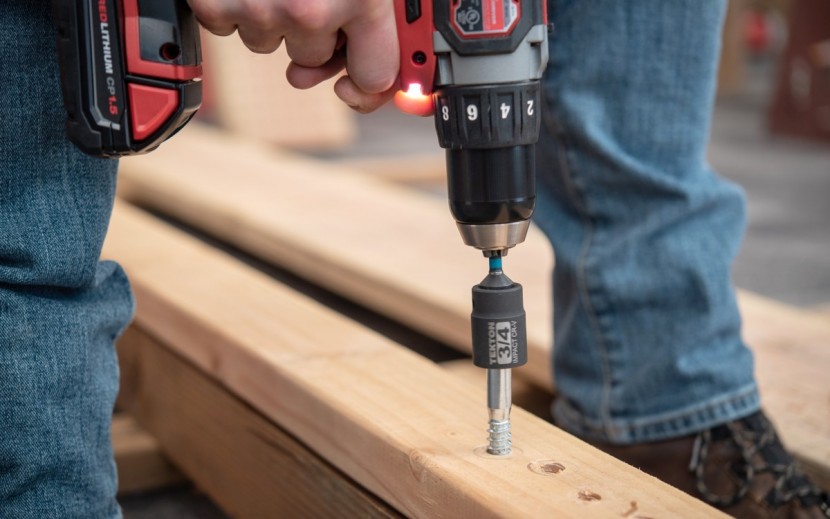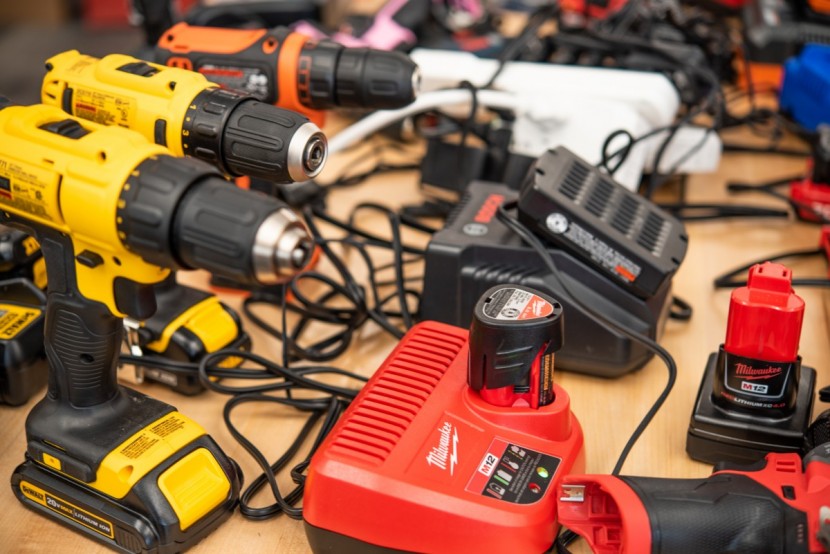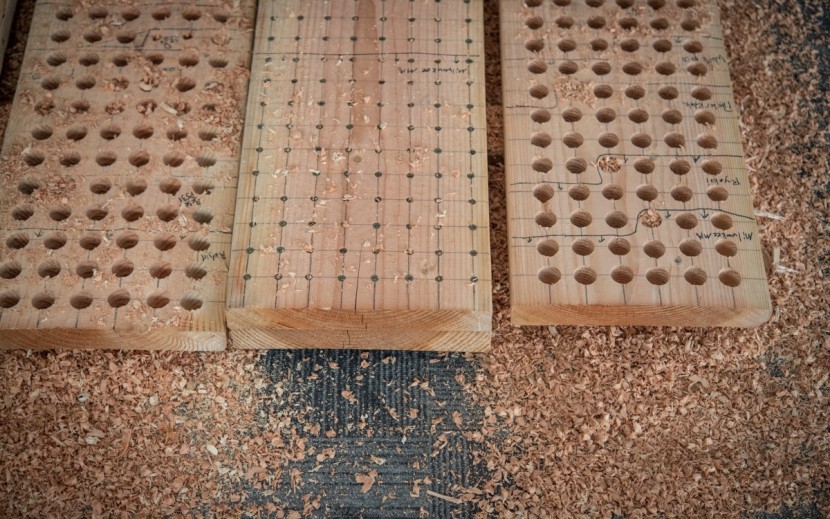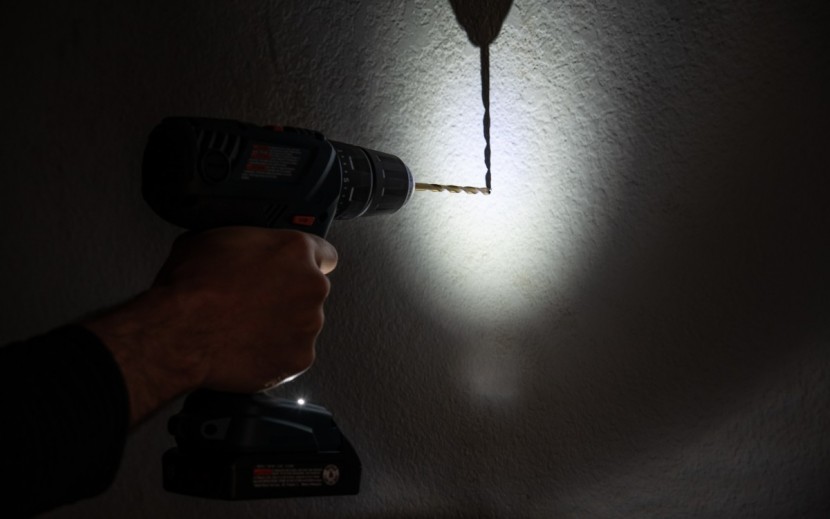To test out drills and see which one is really the best you can get, we started off by comparing and researching all the most popular and promising tools, then bought all the top drills to test head-to-head. We drilled hundreds and hundreds of holes, drove screw after screw, and pushed these products to the limits with some ridiculously large hole saws, along with a handful of other tests. We divided our tests into four different groups, each weighted proportional to their significance, with a full description of our testing procedures and processes below to help you with your DIY projects.
Drilling
An obvious choice when evaluating the performance of drills, our first metric assessed and scored how well each tool did at drilling holes in a variety of different materials. Starting off, we used a 1" paddle bit in each drill to drill several holes with each drill in a standard 2x12 that we got from our local home center.
We scored each drill based on how much it struggled, if it overheated, and if we needed to downshift into the slower gear to successfully drill through the board. This proved to be too much for some of the weaker drills, so we docked them points and tried again with a ½" twist drill.
Next, we moved on to see how well each model did at drilling through metal. We stacked up two thinner sheets of metal to make the equivalent of a 16 ga. sheet, clamped it to the top of a board, and then used each tool to drill a ¼" and ½" hole in it with a normal twist drill.
We scored each model on how long it took to get through the metal and how much each one struggled.
Our final drilling test was a true torture test for these products. We attempted to drill through a solid core door with a 5" diameter hole saw, something much more difficult than anything most people will ever use a handheld cordless drill for.
We again awarded points based on how long it took and how much each drill struggled, deducting points if any overheated and stopped working. We also deducted points if any started smoking, which a few of the cheaper drills did.
Driving
Next, we looked at the second most common use for these products: driving in screws and other fasteners. This metric is comprised of two tests. Starting off, we drove in dozens and dozens of wood screws to two stacked 2x12's, noting how fast each drill could drive the screws if they struggled at all, and if they could drive them to their full depth — flush with the surface.
We didn't pre-drill the screws, but we did get them started by using a cheap screwdriver as a punch to create a divot in the wood. We also used star drive screws to ensure that the bits never slipped in this test.
Next, we upped the ante for these tools and moved on to driving in some 5" long. ½" lag bolts to connect a 2x4 to a 4x4. We predrilled the boards with the appropriate size pilot holes (5/16") and then used an adapter with a socket to drive them in.
We gave the top marks to tools that drove the lag screws to their full depth without struggling and deducted points from models that stalled out part way through or struggled to drive them in.
Battery Life
Following our drilling and driving metrics, we moved on to rating and scoring the included batteries with each drill. It is based on how long each battery lasts and how long they took to charge. We used whatever battery size came included with each drill or a comparable size if we purchased the drill as a tool-only model. This does mean that we tested some drills with different amp-hour batteries, depending on what the manufacturer makes.
To determine how long each of these batteries lasted, we charged each one up completely, then alternated drilling three 1" holes and driving in 16 screws in 2x12's until the battery died.
We then timed how long it took each battery to recharge, awarding the most points to the models that charged the fastest. We used the standard manufacturer's charger for this test.
Convenience
These products are roughly similar, but there are a few features that make some models much more enjoyable to use.
The most important things we compared in this metric are how much each drill weighed and if it has a belt clip. While even the heaviest of these products might not seem that heavy at first, but you will definitely start to feel weighed down by the heavier ones after a full day of driving screws and drilling holes. We also found a belt clip to be invaluable, as it makes it infinitely more convenient to clip the drill to your belt rather than setting it down every time — especially when working on a ladder or step stool.
We also compared how well the integrated LEDs lit up your work area, the difficulty of swapping batteries, and the ease of using the locking mechanism.
We also awarded points if the drills had a battery indicator and if you have different gear modes to adjust the speed and torque. Finally, we also compared and scored each device on its chuck's range of adjustability.
Conclusion
Hopefully, this has provided you with some background information about how we tested and scored these tools and why you can trust our recommendations the next time you are shopping for a new drill.

